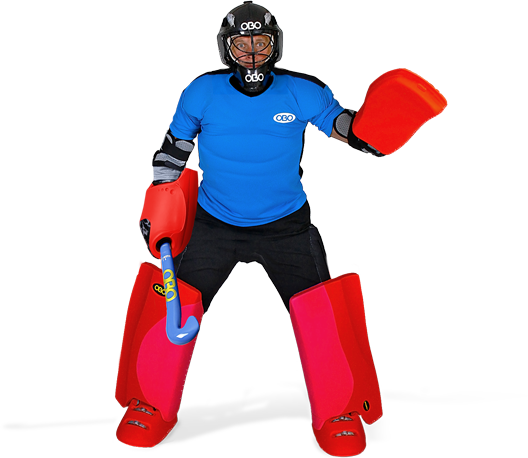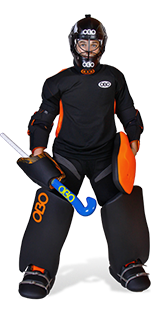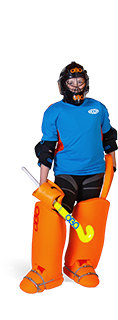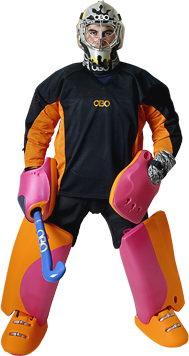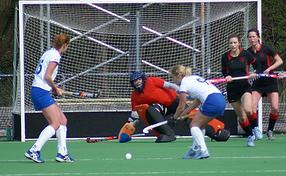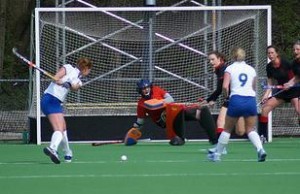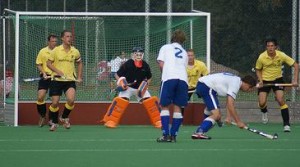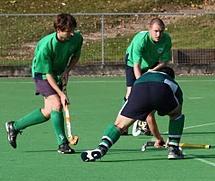KEEPERS RESOURCES

Working out how to react at the short corner
When you are faced with a shot on a short corner, you can gain an advantage by working out the type of shot you are coming up against. Through analysing the shooter’s body patterns and stick positioning, you can work out the type of shot. By looking to check which as you set up for the penalty corner, will let you get an advantage; reading the shot and therefore being able to make the correct decision (to stay up or go down) and select the correct save technique (such as a “logging” to block a low shot or diving, standing or high diving to stop a flick).
Straight strike
The way to work out if a shot is being taken is by the shooter’s hand positioning. If the shooter on the penalty corner has their hands closed at the top of the stick, this means that they are going to shoot at goal. Mostly shooters will start with the stick touching the ground with the stick upright. However, some strikers (who like to get more power on the shot) will often have the stick in mid-air, so that when the injection comes in, they can drive down to gain more power on the shot.
Some hitters like to strike the ball with a ‘baseball swing’; bringing the stick up to shoulder hit and then smashing the stick down to get power and lift on the ball. This is easy to recognise because a lot of players shoot like this. If you notice that the shooter is raising their stick, don’t be put off and get confused: they are making a hard strike at goal.
Drag flick
In comparison to a straight strike, if a player is taking a drag flick, then their hands will be open and their lead hand will be further down the stick. The stick will be held with the stick head touching the floor, since no advantage can be gained from lifting it off the pitch. The way the stick is held will determine the angle of the lift; the higher the stick, the higher the flick, the lower the stick, the lower the flick. Although, depending on technique, this isn’t always true.
The other key sign is if the shooter is further back than the stopper and the other opposing players at the top of the D. Once the ball is trapped and stopped, they will run in to make the drag flick. Some drag flickers prefer to run into the motion of the flick because it gives them more power and momentum; the speed of the run building up to increase the flick’s speed.
Pointers:
- if the shooter has their hands tight around the stick, it is a straight strike
- if the shooter’s hands are open, with the right hand further down the stick, it is a drag flick
- some shooters like to get more power on their shot and will use a ‘baseball swing’; raising their stick up and then driving it down on the shot
- some drag flickers like to take a run-up and will therefore set up further back than their team mates
Comments
Leave Your Comments Below















